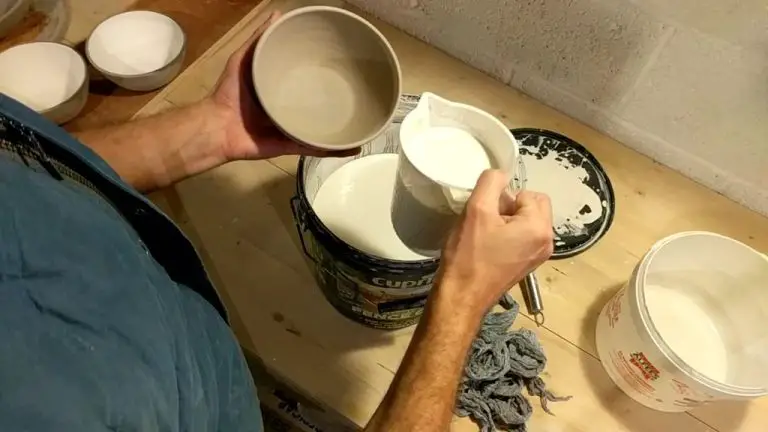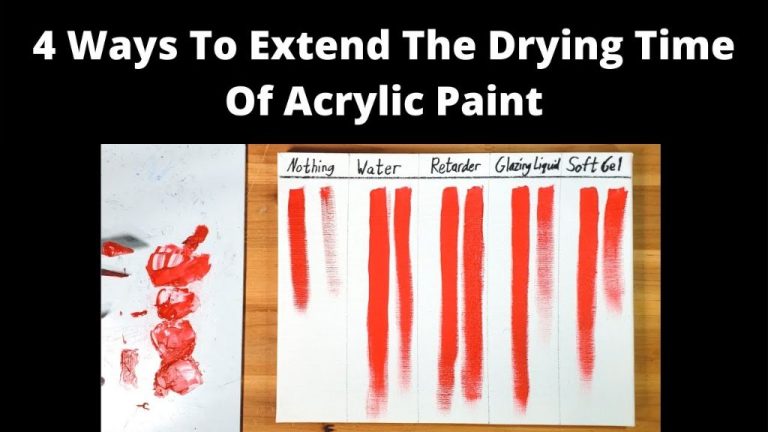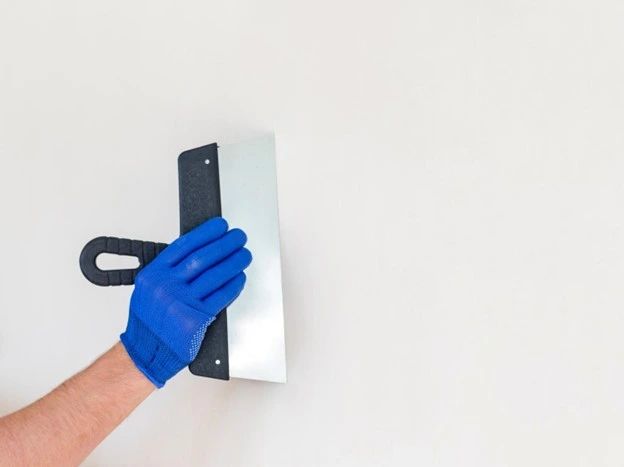How Do You Store Laguna Clay?
Laguna Clay is a brand of modeling clay that is formulated specifically for ceramic artists and potters. It is made by Laguna Clay Company, based in Santa Rosa, California. Laguna Clay offers a wide variety of clay bodies suitable for handbuilding, throwing on the potter’s wheel, and firing at various temperatures. Some of the most popular Laguna clays include B-Mix, Soldate 60, Frost, and White Stone (Laguna Clay Company – About Us).
Laguna clays are known for their smooth, buttery texture and excellent workability. They are formulated to have good plasticity, allowing them to be pushed, pulled, coiled, slab built and thrown without excessive cracking or tearing. Laguna clays also fire to a bright white finish at cone 6 temperatures, making them ideal for decorative and functional ceramic ware. Their clays undergo extensive testing to ensure reliable results for ceramic artists (Working At Laguna Clay: Company Overview and Culture – Zippia).
Keep it Covered
Keeping clay covered when not in use is essential for preventing it from drying out. Exposure to air causes clay to lose moisture over time. According to How To Store Clay, “Exposure to air is one of the quickest ways for clay to dry out.”
The best practice is to always reseal clay in airtight packaging or containers when you are done working with it for the day. Don’t leave clay out on a work surface uncovered. Make sure clay tools are also cleaned and stored away so they don’t continue absorbing moisture.
For long term storage, clay should be tightly wrapped in plastic and placed in a sealed container. This protects the clay from air exposure and keeps it workable for future use. Maintaining proper moisture content will prevent cracking and drying as you manipulate the clay later on.
Use Food Grade Plastic
When storing clay, it’s important to keep it sealed in food grade plastic to prevent it from drying out. Food grade plastic is free of dyes and chemicals that could leach into the clay and cause discoloration or other issues.
Many potters recommend wrapping clay in a layer of plastic cling wrap or a plastic food storage bag before placing it into an airtight plastic container. According to Seattle Pottery Supply, “The best way to store your clay and keep it moist is by sealing it tightly in a thick plastic bag and placing it in a plastic storage container. This will prevent air from reaching the clay.”
Look for food grade plastic bags and wraps made from polyethylene, polypropylene, or nylon. These plastics are durable, flexible, and chemically inert. Some good options are:https://www.dickblick.com/categories/ceramics-sculpture/equipment/clay-containers/
- Glad Press’n Seal plastic wrap
- Ziploc brand plastic bags
- Saran Premium Wrap
Avoid plastic bags containing PVDC or plasticisers, as these chemicals could potentially leach into the clay. Look for thick plastic materials that won’t easily puncture or tear. Properly sealing the clay in inert, food safe plastics will help preserve its moisture and workability.
Seal Airtight

To maximize clay storage life, it is critical to seal it in an airtight container. Air exposure can cause clay to dry out. Some tips for sealing clay storage containers:
- Use containers with tight-fitting lids, like Tupperware or food storage containers with rubber gaskets.
- For bags, squeeze out excess air before sealing and use clips or rubber bands to fully seal the bag.
- Wrap the lid or opening with plastic wrap before closing the container.
- Store clay bricks or blocks in heavy-duty zipper storage bags, squeezing out excess air.
- For clay storage bins, attach weatherstripping or apply a bead of silicone caulk to create an airtight seal between the lid and container.
Checking containers periodically and resealing if needed will help maintain an airtight environment. Proper sealing preserves moisture content and prevents clay from drying out in storage.
Monitor Humidity
Keeping the stored clay at ideal humidity levels will help preserve its workability. Regularly monitor the humidity levels in your clay storage area using a hygrometer. Aim to maintain humidity around 40-50%, as this range will keep the moisture content of the clay stable and prevent it from drying out or becoming too wet. According to an article on Storables, humidity levels between 40-50% help preserve the integrity of the clay over extended storage. If the humidity is too low, the clay can dry out, crack and become difficult to work with. If the humidity gets too high, moisture can build up and potentially damage the clay.
Control Temperature
The ideal temperature range for storing clay is between 55-70°F, according to The Pottery Wheel (https://thepotterywheel.com/how-to-store-pottery-clay/). If the clay gets too cold, it can become stiff and difficult to work with. If it gets too hot, the clay can quickly dry out. The most important thing is keeping the temperature as consistent as possible. Avoid storing clay in places with major temperature fluctuations like attics, garages, or sheds.
Pottery Crafters recommends keeping clay in the coolest part of the home that maintains a stable temperature around 60-65°F (https://potterycrafters.com/how-to-store-pottery-clay/). A basement or interior closet tends to be ideal. You can also use an air conditioner or dehumidifier to regulate storage conditions if needed.
Clean Storage Area
It is important to keep the storage area for your clay clean and free of dust. Dust particles can contaminate the clay and affect the quality of your finished pieces. Make sure to regularly dust shelves, storage containers, and the surrounding areas. Use a vacuum with a brush attachment to thoroughly clean clay storage spaces. Avoid using wet cloths or sprays which can introduce moisture. Storing clay in closed containers helps protect it from dust. Dedicate an interior closet or shelving unit solely for clay storage to maintain cleanliness. As the Bailey Pottery blog states, “Be sure your storage area is in a space where the temperature does not fluctuate and it is free from dust contamination.” Keeping your storage area clean will help prolong the life of your clay.
Shelf Life
Air dry clay has a shelf life of approximately 12-18 months if stored properly [1]. The clay can start to dry out and become less workable after this time. Polymer clay generally has a longer shelf life of 1-5 years depending on the brand [2]. Oil-based modeling clays have an almost indefinite shelf life if stored correctly.
To maximize shelf life, it’s important to seal air dry clay in an airtight container and store it in a cool, dry place away from direct sunlight. Adding a damp paper towel to the storage container can also help maintain moisture levels. Over time, the clay will gradually harden and lose its flexibility. But even clay that is several years old can sometimes be revived by kneading it with a little water.
Reviving Dry Clay
If your clay dries out and becomes too firm to work with, there are ways to rehydrate it. The key is to add water slowly and evenly. One method is to break up the hard clay into small chunks or grind it into a fine powder. Place the chunks or powder in a sealed plastic bag or airtight container. Mist the clay with a spray bottle filled with cool, clean water. Knead the bag from the outside to evenly distribute the moisture. Allow the clay to sit for 10-15 minutes then check the consistency. Continue misting and kneading until the clay reaches the desired soft, pliable texture (WordPress, 2023).
Alternatively, you can place dried clay pieces or powder in a large bucket. Using a spray bottle or hose on low pressure, gradually add water while mixing and kneading with your hands. Cover the bucket between misting sessions to prevent excess evaporation. Continue rehydrating until the clay is smooth, soft, and workable again (Groundskeeper University, 2023). Work carefully to add just enough water without making the clay too wet or sticky.
When in Doubt, Ask
Consulting the manufacturer’s instructions is always the safest option when unsure about proper clay storage. Laguna Clay Co., a major manufacturer of ceramic clay, provides detailed recommendations on their website and product documentation:
According to the Laguna Clay SDS Categories, Laguna clays should be stored in a “cool, dry, well-ventilated place” away from sources of heat or moisture. Their Safety Data Sheet specifies keeping clay in the original packaging or sealed containers during storage and handling. Contacting Laguna Clay directly by phone or email is another way to get authoritative guidance on storing specific clay products.
Checking with the clay supplier or manufacturer can help clarify best practices for storage duration, ideal temperature and humidity levels, re-sealing opened packages, reviving dried out clay, and any other questions that come up. Their expertise and experience makes them the #1 resource when in doubt about proper storage.




